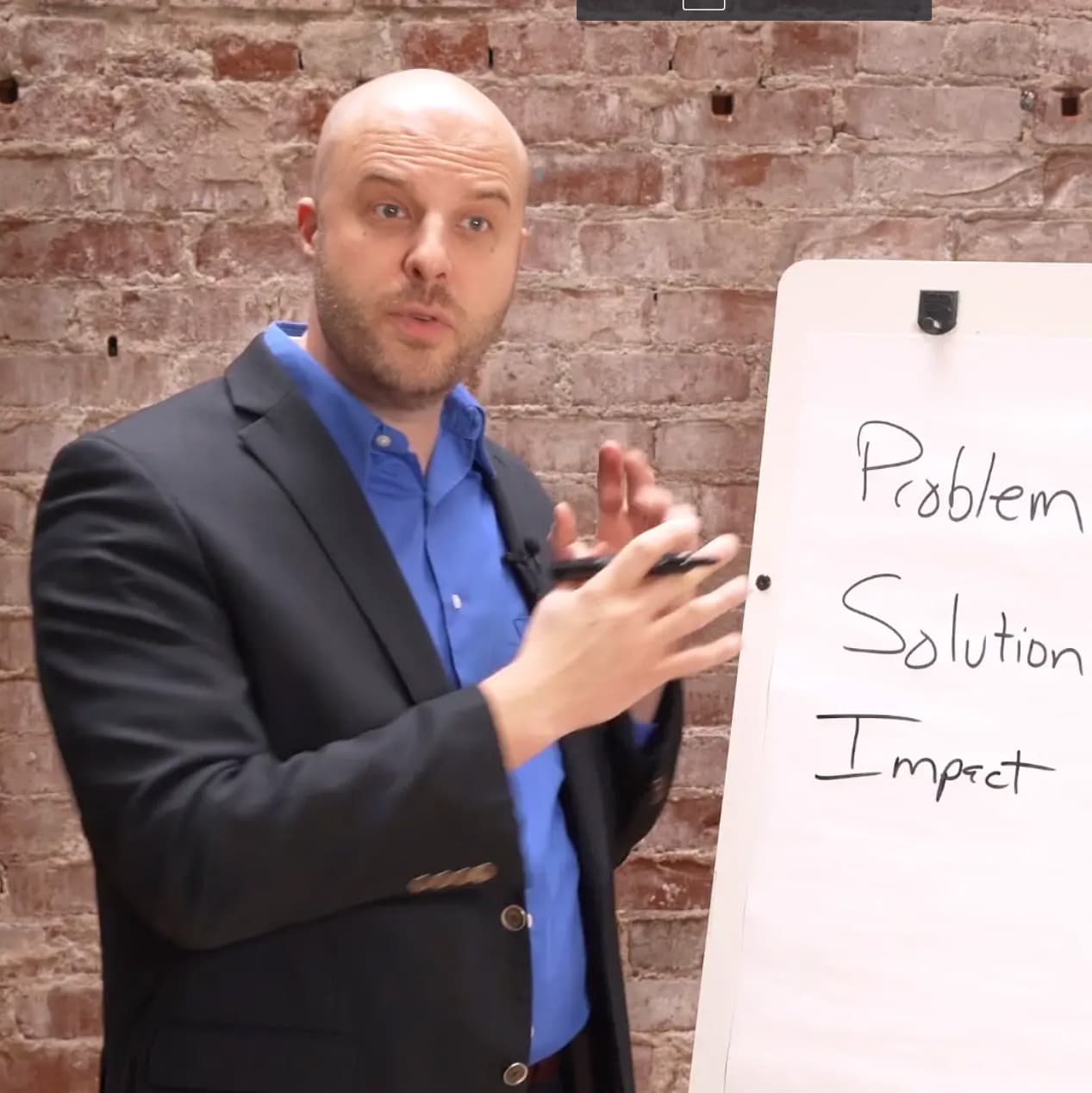Transcript:
Dealing with a blank page can be daunting. As a fundraiser sitting at the computer, ready to write a fundraising letter, or to craft out an outline for a speech you’re going to give at a fundraising event, or even plan out your comments that you’re going to share with a donor in a one-on-one experience – it can sometimes be intimidating to look at that white page and say, “What do I say?”
Well, there’s an easy process that I teach my students at The University of St Thomas on how to break blank page syndrome and actually break into a flow that works every single time. Here’s the outline.
Start with the problem. Now, this is something that we don’t spend a lot of time, as fundraisers, often doing. And this is an observation that I have, especially when I’m coming in doing an audit of a fundraising program of some sort and I’ll look at the materials or I’ll look at videos, or I’ll even ask major donor gift officers to kind of role play with me. And they often start talking about their organization instead of talking about the problem itself.
And the reason that we don’t go into the problem is that we’re uncomfortable with the problem. Or we want to focus on ourselves as an organization. And we get all kind of garbled up.
But when we start with the problem it allows the donor to be the hero because it allows the donor to be part of the solution itself.
Now, the next step of the outline is actually the solution. Now, there’s two parts of a good solution. One is how you plan to solve it. The second element is why you are the one to do it.
And this is the one that we’re really good at as fundraisers. We’re really good at sharing the solution. We want to build a building. We want to open up a campus. We want to launch a program. We want to serve more people. We want to provide more meals. And we’re really good at this. We know how to do this.
So, because we know how to do this one we end up spending a lot of time on it. A significant amount of time on it. And what it is, when we focus a huge amount on solution what that often is is like “Belly Button Thinking” where you’re looking at yourself. You’re looking at your belly button instead of looking out at the donor and giving them a vision for how they can make a difference and how the donor can be the solution itself.
The third element is impact. After you have shared the problem and you’ve shared it in depth, and then you’ve gone through and said, “Here’s how the solution works. Here’s what you can do. You then move into the impact. “This is what your gift will accomplish.” “If you give today, your gift will help x number of children or x number of students.” Or it will help in this way. And within six months this is the outcome that we expect from your gift specifically. This is the impact specifically that we’re going to see.
A lot of times we don’t even see impact really come in or impact just is an output thing. We’ll serve so many meals. Or we’ll serve so many students. But the impact is not, “Will those students actually learn more?” “Will those students improve?” So, focusing more on outcomes instead of outputs in the impact section is important.
Using this “PSI Outline” makes a lot of sense and it’s really easy for breaking that “White Page Syndrome”.
Now, here’s one last point. When you’re looking at the typical “PSI Model” you should spend 60% of your time on the problem itself. Another 20% of your time the solution. And then 10-20% on the impact. That should be what your focus is when you’re looking at your problem, your solution, and your impact.
If you help the donor truly understand what the problem is the rest of it’s going to be easy. They’re going to be compelled to act.


